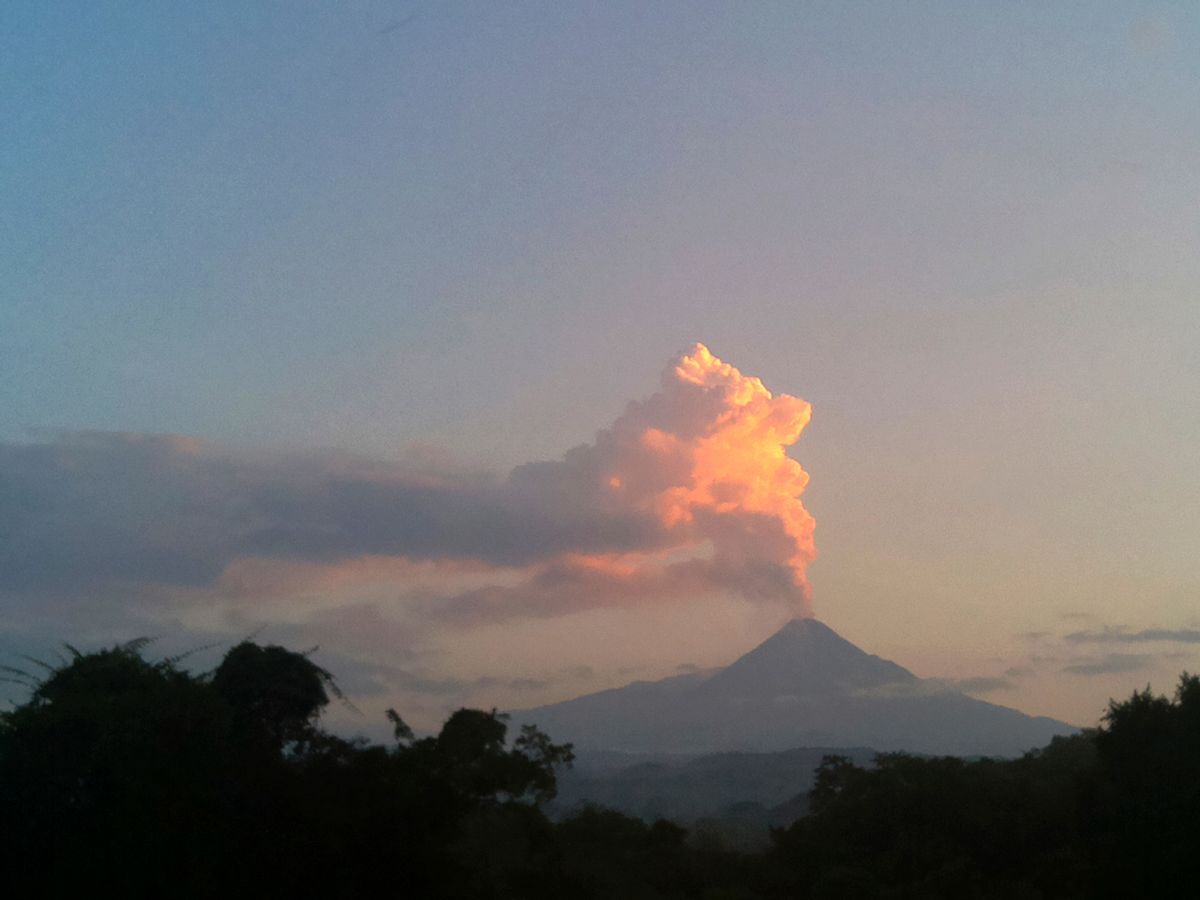How do volcanologists know what a volcano is going to do?
Each volcano, like each individual person, has its own unique “personality.” You may know, for example, that you can tease your brother mercilessly — up until the point where his eyebrows crease together because that means he’s going to blow his top. But do you know what it means if my eyebrows crease together? (It’s a surefire sign I’m thinking really hard.)
Similarly, one volcano might reveal an imminent eruption by a sudden increase in the frequency and strength of earthquakes located directly below it. A different volcano might not show an increase in earthquake strength but instead display an increase in elevation as magma swells beneath its surface — just as air filling a balloon causes it to increase in size.
The best way scientists can determine whether a volcano is about to erupt is to study its past behavior: How did this volcano act before it erupted last time? Our ability to predict eruptions is directly related to the amount of historic data we have for a given volcano.
For most of Earth’s active volcanoes, though, we don’t have detailed information. Mount Pinatubo, Philippines, for example, erupted catastrophically in 1991; before that, its most recent eruption was around 500 years earlier. Precursors at Mount Pinatubo included ash explosions at the summit, increases in the number of vents spewing hot gas, changes in the volcano’s shape and increases in both the frequency and size of earthquakes. Two months of increasing activity preceded the 1991 paroxysmal eruption.
In contrast, Mount St. Helens volcano in the U.S. is probably the most closely watched volcano on the planet. Decades of detailed observations allow geologists to make fairly precise predictions about Mount St. Helens: a specific pattern of earthquakes, for example, means that new lava will erupt within two weeks.
Kilauea volcano has been erupting since 1983, although there have been temporary pauses in its lava production. In these past 35 years, researchers have gotten familiar with how Kilauea behaves: we have satellite data, instruments that record earthquakes, others that show us how the ground is deforming because of magma pushing at it from below. Data are collected continuously – improving our ability to predict eruptions.
At Kilauea volcano now, lava beneath Kilauea’s summit is traveling underground several kilometers to the east, where it’s coming out of the ground in folks’ back yards. This has happened before: in 1983, lava from Kilauea destroyed a pleasant neighborhood. And it will happen again.
As technology advances, volcanologists and experts in collecting and interpreting satellite data (including remote-sensing scientists and geodesists) are improving our ability to predict eruptions. Now we can collect important information about volcano shape, temperature and changes in those parameters using satellites that provide the view from space. Satellites give volcanologists a good overall view of the volcano, but can’t supply human-scale details. Satellite orbits typically allow them to pass over a given volcano only once every week or two. We still require seismometers on the ground to detect and report earthquakes caused by magma moving beneath the volcano, but seismometers are too expensive to deploy and maintain everywhere.
Accurate predictions of volcanic eruptions — particularly the size of the eruption and whether the volcano will explode or generate lava flows — are essential for local authorities to make life-and-death decisions about people in the vicinity of an active volcano. If an evacuation is ordered and a volcano explodes, lives are saved. This happened in the 1991 Pinatubo eruption. If an evacuation is ordered and the volcano doesn’t explode, economic losses and human suffering can be catastrophic. This scenario played out in Mammoth Mountain, California, in 1984, where the local community lost millions of tourist dollars – and there was no eruption.
To predict eruptions on the scale of hours, days or weeks, we need detailed information about each potentially threatening volcano. Without that, we are forced to make comparisons: will a volcano behave more like Mount St. Helens or Mount Pinatubo, for example? In other words, do creased eyebrows on someone you’ve just met (or, for example, increased seismicity) mean that person is about to blow its top or is just thinking really hard? More data, from more volcanoes, make for better comparisons, but nothing beats really getting to know the behavior of an individual volcano.
Tracy K.P. Gregg, Associate Professor of Geology, University at Buffalo, The State University of New York



Shares